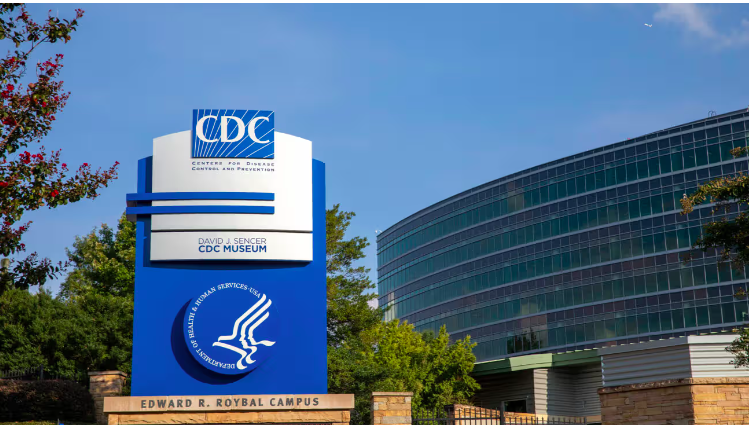Health
Unraveling the Mystery: How Can Pain Cause Low Blood Pressure?
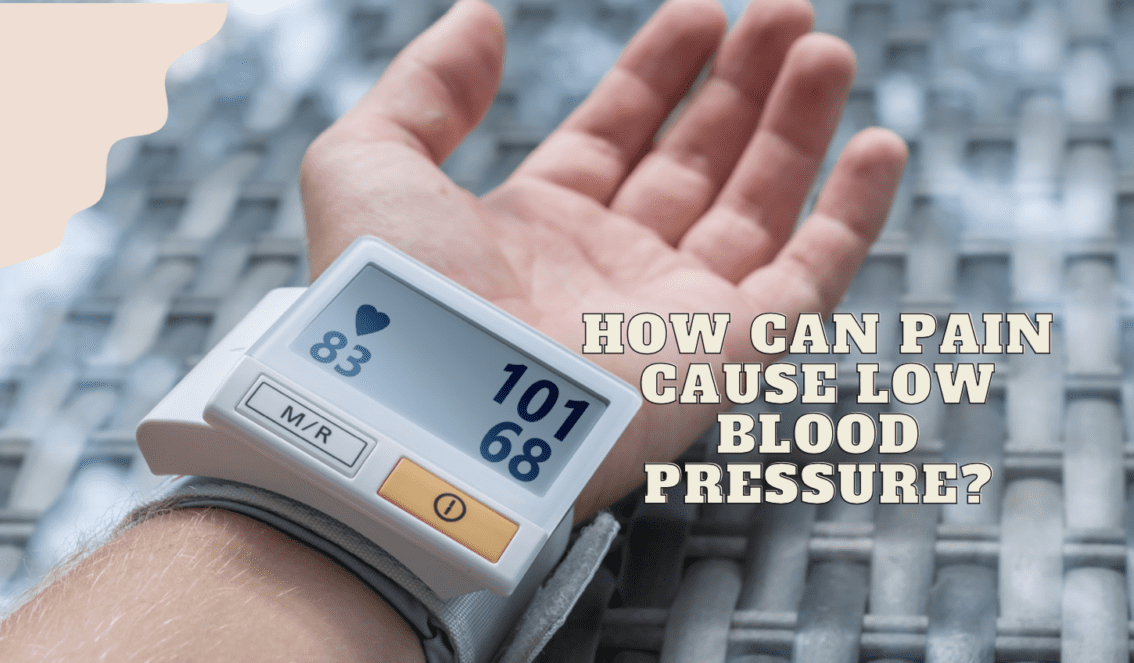
Last Updated on May 21, 2023 by Nurse Vicky
Unraveling the Mystery: How Can Pain Cause Low Blood Pressure?
Low blood pressure, also known as hypotension, is a condition characterized by blood pressure levels that are below the normal range. While there are various factors that can contribute to low blood pressure, one intriguing connection is the role of pain.
Pain, whether acute or chronic, has the potential to affect our cardiovascular system, leading to fluctuations in blood pressure.
In this comprehensive article, we will delve into the mechanisms through which pain can cause low blood pressure, exploring the physiological responses and potential underlying causes.
Understanding this link can help shed light on the complex relationship between pain and blood pressure regulation, ultimately paving the way for more effective management strategies.
The Physiology of Blood Pressure Regulation
Before we delve into the relationship between pain and low blood pressure, it’s essential to grasp the basics of blood pressure regulation. Blood pressure is a measure of the force exerted by circulating blood against the walls of blood vessels.
It is influenced by several factors, including heart rate, stroke volume, and the resistance encountered by blood flow in the arteries. The autonomic nervous system, comprising the sympathetic and parasympathetic branches, plays a crucial role in maintaining blood pressure within a narrow range.
The Sympathetic Response to Pain
Pain triggers a complex physiological response, often involving the activation of the sympathetic nervous system. The sympathetic response, commonly known as the “fight or flight” response, aims to prepare the body for potential danger or stress.
When we experience pain, sympathetic nerve fibers release neurotransmitters like norepinephrine, which activate adrenergic receptors in the body.
Vasodilation and Low Blood Pressure
One significant effect of the sympathetic response to pain is vasodilation, the widening of blood vessels. The release of neurotransmitters causes the smooth muscles surrounding blood vessels to relax, resulting in an increase in vessel diameter.
While this response is essential for delivering increased blood flow to the injured or affected area, it can lead to a decrease in systemic vascular resistance, ultimately resulting in low blood pressure.
Inflammatory Response and Blood Pressure
Inflammation often accompanies pain, particularly in cases of acute injury or conditions like arthritis. This inflammatory response can also impact blood pressure regulation.
Inflammation triggers the release of various substances, including cytokines and prostaglandins, which can modulate blood vessel function. Prostaglandins, for instance, contribute to vasodilation and can further exacerbate the drop in blood pressure caused by pain.
Pain-Induced Activation of the Vagus Nerve
The vagus nerve, a crucial component of the parasympathetic nervous system, plays a vital role in maintaining cardiovascular homeostasis. Interestingly, pain can stimulate the vagus nerve, leading to the activation of the parasympathetic response.
Activation of the parasympathetic nervous system can result in decreased heart rate and blood pressure due to increased vagal tone. This mechanism provides another pathway through which pain can cause low blood pressure.
Underlying Causes and Medical Conditions
While pain itself can induce low blood pressure, it is essential to consider the underlying causes or medical conditions that may exacerbate this connection.
Conditions such as orthostatic hypotension, autonomic neuropathy, and certain medications can interact with pain and further contribute to low blood pressure. Understanding these underlying factors is crucial for accurate diagnosis and effective management.
If left untreated, low blood pressure can be a serious condition. While you may feel fine at the moment, you should seek medical attention if you notice any of these signs and symptoms.
If you experience any of these symptoms, it’s important to talk to your healthcare providers, such as your doctor or cardiologist. Fortunately, treatment is available. Read on for more information. Also, learn how to identify the warning signs of low blood pressure and what to do to treat it.
Neurally mediated hypotension
OH can occur due to a wide variety of different causes. Pain, for example, can induce OH. The causes can be secondary or primary. Peripheral neuropathies such as diabetes mellitus, hereditary sensory neuropathies, and amyloidosis can all result in OH.
Individuals with neurogenic orthostatic hypotension usually experience the first symptoms of OH after suffering from some type of neurological problem.
Patients with severe autonomic failure experience profound hypotension within 3 minutes of standing. Similarly, subjects with baroreflex failure experience pronounced episodes of unopposed hypertension and tachycardia.
Some researchers have suggested that neurally mediated syncope may represent a transitional functional state between normal and abnormal heart rhythms. Regardless of the exact cause, it is often caused by pain, traumatic brain injury, and abnormalities in the reflex arc.
Shock-induced hypotension
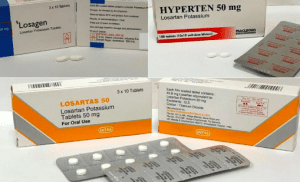
Pain and shock can be closely related. Shock may result from an injury to the cardiovascular system or from an infection. Doctors treat the infection, stopping the spread of shock. Septic shock may also result from a heart attack or from an underlying condition, such as arteriosclerosis.
In both cases, doctors stabilize blood pressure and try to resurrect normal blood flow to the organs. Shock is a life-threatening condition caused by the lack of blood flowing throughout the body.
The lack of blood can damage numerous organs and may result in death. Symptoms of shock include rapid, shallow breathing, cold, clammy skin, weak pulse, dizziness, and fainting. It can also be caused by an emotional or traumatic event.
Some conditions can cause shock, including infections and spinal cord trauma. IV fluids are usually given in addition to other medications to restore blood pressure.
Orthostatic hypotension
There are several possible causes of orthostatic hypotension, but one of the most common is dehydration. Dehydration decreases blood volume and can cause symptoms of low blood pressure. Even mild dehydration can cause symptoms of orthostatic hypotension.
Other causes of low blood pressure include heart problems such as a heart attack, a failing heart, or a defective heart valve. Other causes include thyroid and adrenal insufficiency, a condition that affects nerves, and the effects of diabetes.
Symptoms of orthostatic hypotension include low blood pressure, fainting, and blurred vision. The signs and symptoms are usually brief. While dizziness is a common symptom of orthostatic hypotension, it usually goes away quickly once the patient returns to a standing position.
However, if the symptoms persist or worsen, it is advisable to seek medical attention immediately. Patients who have fainting spells or experience a drop in blood pressure should consult with a doctor.
Medications used to treat high blood pressure

There are many types of medicines for high blood pressure. Each one has its own characteristics and actions in the body. The table below provides information on the various classes of blood pressure medications, their strengths and side effects, and their recommended dosages.
In addition to giving the most up-to-date information on blood pressure medication, the table provides warnings for certain combinations of medications and groups of patients. This information helps physicians customize hypertension treatment.
ARBs work similarly to ACE inhibitors.
They work by blocking the release of an enzyme in the body called renin that starts a chain reaction that raises blood pressure. However, they shouldn’t be used with ACE inhibitors because they may increase the risk of stroke. Vasodilators, or blood-pressure-lowering drugs, work directly on artery muscles. They help decrease blood pressure by making them less constricted.
Treatment

The symptoms of low blood pressure caused by pain can be a sign of a broader medical condition. This condition is often more serious than simply lowered blood pressure. Several factors can be involved in causing this condition, and your doctor will recommend treatment based on those findings.
Among the treatments for low blood pressure caused by pain are lifestyle changes, hormone replacement medication, and drugs to stimulate nerves. People with low blood pressure may experience the following symptoms:
fainting, lightheadedness, dizziness, and dizziness. They may experience these symptoms after standing for long periods of time or after eating. They may also experience chest pain, lightheadedness, and dizziness.
People with low blood pressure may also experience chest pain or even fainting. In addition, low blood pressure can lead to organ damage, such as heart failure or stroke.
Additionally, many ask
Does discomfort result in a drop in blood pressure?
Reasons for having low blood pressure There are a variety of factors that might contribute to low blood pressure, such as emotional stress, fear, insecurity, or pain (the most common causes of fainting)
How exactly does discomfort influence one’s blood pressure?
However, the effect that chronic pain plays on blood pressure is not as well understood as the function that acute pain plays on blood pressure. Acute pain raises blood pressure by increasing sympathetic activity.
Antihypertensives and analgesics are frequently recommended to patients together for the treatment of a number of illnesses, including hypertension and co-existing musculoskeletal issues.
Does ongoing pain have an effect on one’s blood pressure?
Researchers in the medical field have shown that there is a connection between persistent discomfort and hypertension, which is another name for high blood pressure.
This indicates that if you suffer from chronic back pain on a regular basis, you are at a greater risk for developing high blood pressure as well as other concerns that are related to your cardiovascular health.
How does discomfort impact the body’s vital signs?
It is a well-established principle in the field of internal medicine that there is a correlation between the presence of pain and abnormalities in vital signs like rapid heart rate and high blood pressure.
Acute pain is related to a stress reaction in the body, which consists of elevated blood pressure, heart rate, pupil diameter, and plasma cortisol levels. This response is caused by acute pain.
What exactly is meant by the term “dangerous low blood pressure”?
It is possible that it will not create any symptoms, but if it does, you may need to seek medical assistance.
There are two different ways to define hypotension:
Absolute hypotension: Your blood pressure when you’re at rest is lower than 90/60 mmHg (millimeters of mercury).
Does discomfort have an impact on diastolic blood pressure?
In addition to this, the group of patients who experienced chronic pain had lower diastolic blood pressure. In conclusion, the results of the study demonstrated an increased sensitivity to electrical pain, as opposed to the decreased pain responsiveness that is often described in those
who does not experience pain? Is there a possibility that pain medicine could alter blood pressure?
Medications to treat pain It’s possible that using certain painkillers and anti-inflammatory drugs could cause you to retain water, which could lead to renal problems and raise your blood pressure.
Indomethacin is one example among several (Indocin, Tyvorbex) Medications available without a prescription, such as ibuprofen, naproxen sodium (Aleve), and aspirin (Advil, Motrin IB, others)
Do you feel more exhausted when you’re in pain?
You may experience exhaustion as a result of the expenditure of physical and emotional energy caused by your attempts to manage the pain. Pain can also make you tired because it disrupts your sleep or prevents you from sleeping well when you do manage to get some shut-eye. There are a number of forms of arthritis that have been linked to anemia.
How can you tell for sure that your blood pressure is too low?
Manifestations of a low blood pressure condition:
- lightheadedness or dizziness could be the result.
- It makes me feel nauseous.
- the vision that is unclear.
- generally feeling weak.
- confusion.\sfainting.
What are the consequences of not seeking treatment for pain?
According to Strassels and Dr. Eun-Ok Im of the School of Nursing, untreated or inadequately treated pain can rob people of their ability to function and can cause depression, irritability, sexual dysfunction, and disruptions in sleeping, eating, and mobility.
In addition, untreated or inadequately treated pain can lead to an increase in the risk of injury. Receiving the appropriate treatment can assist individuals in returning to their life.
How exactly does persistent pain affect the functioning of the heart?
Chronic pain that lasts for an extended period of time can lead to high levels of tension and worry, which, in turn, can cause an increase in blood pressure and heart rate. Blood pressure and heart rate that remain elevated for an extended length of time can cause damage to the heart, which can eventually lead to cardiac arrest, a stroke, or even death. 10 Oct 2019
Conclusion
In conclusion, the intricate relationship between pain and low blood pressure involves various physiological mechanisms. The sympathetic response to pain leads to vasodilation, reducing systemic vascular resistance and potentially causing low blood pressure. Additionally, the inflammatory response and activation of the vagus
Health
Protein-Infused Diet Coke: The Viral ‘Dirty Soda’ Trend Taking TikTok by Storm

Protein-Infused Diet Coke: The Viral ‘Dirty Soda’ Trend Taking TikTok by Storm
The rise of quirky, unconventional food and drink trends is a staple of social media, but one concoction that’s recently captured TikTok’s imagination is “Protein Diet Coke,” fondly referred to as a “dirty soda.”
Combining the classic fizz of Diet Coke with creamy protein shakes, this bizarre yet fascinating combination has gained traction for its unique taste, nutritional benefits, and shareable aesthetic appeal.
But is it more than just a passing fad? Let’s dive into why this drink has taken the internet by storm, the health implications, and how you can make your own.
What Is Protein Diet Coke?
Protein Diet Coke is a mashup of two popular beverages: Diet Coke, known for its zero-calorie allure, and protein shakes, a go-to choice for fitness enthusiasts.
By blending these seemingly unrelated drinks, you get a fizzy, creamy concoction that surprises the palate and offers a protein-packed twist.
This beverage has become a TikTok sensation, with videos showcasing creative ways to personalize the drink by experimenting with flavors, toppings, and presentation.
How Did Protein Diet Coke Become a Trend?
The trend began with users sharing videos of themselves trying the drink and reacting to its surprising taste.
The hashtag #ProteinDietCoke amassed millions of views as influencers and everyday users alike showcased their custom recipes. Social media thrives on novelty, and the odd pairing of soda and protein shake fits the bill perfectly.
Moreover, this trend reflects a broader shift toward incorporating fun into fitness and healthy eating. As people explore unique ways to stay healthy, Protein Diet Coke offers a mix of indulgence and nutrition.
Health Benefits of Protein Diet Coke
1. Boosts Protein Intake:
Protein is essential for muscle repair, weight management, and overall body function. By mixing Diet Coke with a protein shake, you create a delicious way to meet your daily protein goals.
2. Low-Calorie Alternative:
For those watching their calorie intake, using Diet Coke and low-sugar protein shakes keeps the drink guilt-free while satisfying cravings for something sweet and fizzy.
3. A Fun Recovery Drink:
The combination of carbonation and protein makes this drink a potential post-workout recovery option. While traditional recovery drinks are effective, Protein Diet Coke brings a fun twist to replenishing nutrients.
Possible Drawbacks of Protein Diet Coke
While this beverage has many enthusiasts, it’s not without its critics.
1. Artificial Sweeteners:
Diet Coke contains artificial sweeteners like aspartame, which some people prefer to avoid due to potential health concerns.
2. Unusual Flavor:
Not everyone loves the combination of cola and creamy textures. For some, it’s an acquired taste.
3. Limited Nutritional Value from Soda:
Though protein shakes provide nutrients, the soda itself doesn’t offer significant health benefits. Consuming it in moderation is key.
How to Make Protein Diet Coke at Home
Ingredients:
- 1 can of Diet Coke (12 oz)
- 1 scoop or 8 oz of your favorite protein shake (vanilla or caramel flavors work best)
- Ice cubes
- Optional: toppings like whipped cream, syrups, or fruit
Instructions:
- Fill a glass with ice cubes.
- Pour the Diet Coke into the glass, leaving some space for the protein shake.
- Slowly add the protein shake to the Diet Coke. Stir gently to combine.
- Customize with toppings or syrups if desired.
- Enjoy immediately!
Why Do People Love It?
The allure of Protein Diet Coke lies in its unexpected combination and social media appeal.
The drink’s unique flavor profile intrigues people, while its aesthetic presentation makes it Instagram-worthy.
Additionally, it’s a fun way to consume protein without feeling like you’re drinking a traditional shake.
Creative Variations of Protein Diet Coke
1. Mocha Protein Soda:
Add a chocolate-flavored protein shake for a mocha-inspired treat.
2. Tropical Twist:
Use coconut-flavored protein powder and garnish with pineapple slices.
3. Spicy Cola Blend:
Mix in a dash of cinnamon or chili powder for a bold kick.
4. Vanilla Caramel Float:
Top with a dollop of whipped cream and caramel drizzle for an indulgent dessert-like drink.
Is Protein Diet Coke Here to Stay?
Trends often fade as quickly as they emerge, but Protein Diet Coke might have staying power due to its flexibility and nutritional appeal. As long as social media continues to celebrate creativity in the kitchen, this quirky beverage is likely to remain a go-to option for adventurous foodies.
Conclusion
Protein Diet Coke is more than just a viral sensation; it’s a testament to how creativity can turn everyday ingredients into something extraordinary.
While it may not replace traditional sources of protein or be everyone’s cup of tea (or soda), it has undeniably carved out a niche in the world of health-conscious indulgence.
Whether you’re in it for the taste, the health benefits, or the TikTok-worthy moments, this “dirty soda” trend is worth a try.
FAQs
1. Can I use regular Coke instead of Diet Coke?
Yes, but keep in mind that regular Coke has significantly more sugar and calories, which might defeat the purpose of a low-calorie drink.
2. What type of protein shake works best?
Vanilla and caramel protein shakes are popular choices because they complement the flavor of cola. However, feel free to experiment with other flavors.
3. Is Protein Diet Coke suitable for kids?
While it’s not inherently harmful, the caffeine content in Diet Coke might not be suitable for children. Opt for caffeine-free soda if making this for kids.
4. Can I make a vegan version?
Absolutely! Use plant-based protein shakes and ensure the soda is vegan-friendly.
5. How often can I drink Protein Diet Coke?
Like any treat, moderation is key. Consuming it occasionally as part of a balanced diet is perfectly fine.
References
Health
STI Epidemic: Decline in New Syphilis and Gonorrhea Cases in the US, CDC Reports
Health
Dave Coulier Opens Up About His Battle with Stage 3 Non-Hodgkin’s Lymphoma

Dave Coulier Opens Up About His Battle with Stage 3 Non-Hodgkin’s Lymphoma
A Beloved Star Faces a Serious Diagnosis
Dave Coulier, best known for his role as Joey Gladstone on the iconic sitcom Full House, has revealed a deeply personal health challenge.
The comedian and actor recently announced his diagnosis of Stage 3 Non-Hodgkin’s Lymphoma, sparking widespread concern and support from fans worldwide.
Coulier’s bravery in sharing his journey sheds light on this complex form of cancer, its symptoms, treatment options, and the importance of early detection.
What is Non-Hodgkin’s Lymphoma?
Understanding the Disease
Non-Hodgkin’s Lymphoma (NHL) is a type of cancer that originates in the lymphatic system, which is an integral part of the body’s immune defense.
This form of lymphoma is distinct from Hodgkin’s lymphoma due to differences in the cancerous cells’ appearance and behavior.
- Lymphatic System’s Role: It helps fight infections and regulates fluid balance in the body.
- Lymphoma’s Impact: NHL occurs when lymphocytes (a type of white blood cell) grow uncontrollably, leading to tumors.
Dave Coulier’s Journey: From Diagnosis to Awareness
The Diagnosis
Coulier disclosed that he had been feeling fatigued and unwell for several months before seeking medical advice.
A series of diagnostic tests, including a biopsy and imaging scans, confirmed the presence of Stage 3 Non-Hodgkin’s Lymphoma.
How He Shared the News
In a heartfelt video shared with his fans, Coulier discussed his diagnosis candidly. The star emphasized the importance of listening to one’s body and seeking medical help when something feels off.
“I’ve always tried to make people laugh, but now, I want to use my voice to educate and inspire,” he said.
Symptoms of Non-Hodgkin’s Lymphoma
Recognizing the symptoms early can make a significant difference in treatment outcomes.
Some common symptoms include:
- Swollen lymph nodes, often painless
- Persistent fatigue
- Unexplained weight loss
- Fever and night sweats
- Abdominal pain or swelling
- Chest pain, coughing, or trouble breathing
Why Early Detection Matters
Coulier’s journey highlights the importance of not ignoring persistent symptoms. Timely diagnosis can improve treatment effectiveness and overall prognosis.
Stages of Non-Hodgkin’s Lymphoma
NHL is categorized into four stages based on its spread:
- Stage 1: Cancer is localized to one lymph node region.
- Stage 2: Two or more lymph node regions on the same side of the diaphragm are affected.
- Stage 3: Cancer involves lymph nodes on both sides of the diaphragm.
- Stage 4: The disease has spread beyond the lymphatic system to other organs.
Coulier’s diagnosis at Stage 3 underscores the critical need for awareness and early intervention.
Treatment Options for Non-Hodgkin’s Lymphoma
Tailored Treatment Plans
The treatment for NHL varies depending on the stage and specific subtype.
Common approaches include:
- Chemotherapy: Often the first line of defense to target rapidly dividing cancer cells.
- Radiation Therapy: Used to shrink tumors in localized areas.
- Immunotherapy: Boosts the immune system’s ability to fight cancer.
- Targeted Therapy: Focuses on specific molecules involved in cancer growth.
Dave Coulier’s Treatment Regimen
While Coulier hasn’t shared detailed specifics about his treatment, he expressed gratitude for his medical team and the support of loved ones.
Living with Non-Hodgkin’s Lymphoma
Physical and Emotional Challenges
Coping with cancer involves more than just physical treatments. Patients often face emotional struggles, including anxiety, fear, and uncertainty.
Coulier’s Positive Outlook
Despite his diagnosis, Coulier remains optimistic, often sharing moments of humor and gratitude. His resilience inspires others battling similar challenges.
Raising Awareness for Non-Hodgkin’s Lymphoma
The Power of Advocacy
Coulier is using his platform to spread awareness about NHL. His message encourages individuals to prioritize their health and support ongoing cancer research.
Supporting Research and Treatment Advances
Progress in lymphoma treatment, such as CAR T-cell therapy and advancements in immunotherapy, offers hope for patients worldwide.
How Fans Can Show Their Support
Messages of Encouragement
Fans have flooded social media with messages of love and encouragement for Coulier. Sharing personal stories of resilience and hope strengthens the community of those affected by lymphoma.
Donating to Lymphoma Research
Supporting organizations focused on lymphoma research and patient advocacy can make a significant impact.
Conclusion:
Dave Coulier’s openness about his battle with Stage 3 Non-Hodgkin’s Lymphoma reminds us of the importance of health awareness and community support. As he navigates this challenging chapter, his strength and advocacy serve as a beacon of hope for others facing similar battles.
FAQs
1. Can Non-Hodgkin’s Lymphoma be cured?
Yes, many cases of NHL can be treated effectively, especially when diagnosed early. Advanced treatments have improved survival rates significantly.
2. How does Non-Hodgkin’s Lymphoma differ from Hodgkin’s Lymphoma?
The primary difference lies in the specific type of cancerous cells. Hodgkin’s Lymphoma involves Reed-Sternberg cells, which are absent in NHL.
3. Are there lifestyle factors that increase the risk of NHL?
While the exact cause is unknown, factors like a weakened immune system, certain infections, and exposure to specific chemicals can increase risk.
4. What support resources are available for NHL patients?
Numerous organizations, such as the Lymphoma Research Foundation, offer resources, support groups, and financial assistance for patients and their families.
5. How can I reduce my risk of developing lymphoma?
Maintaining a healthy lifestyle, avoiding exposure to harmful chemicals, and addressing infections promptly can help lower your risk.
References:
-

 Trending Stories1 year ago
Trending Stories1 year agoCDC: 1 in 4 Americans Still COVID-Free by End of 2022
-
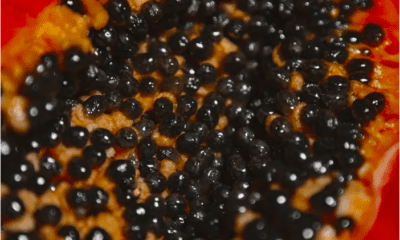
 Health8 months ago
Health8 months agoHow Do Pawpaw Seeds Support Cardiovascular Health?
-

 Health5 years ago
Health5 years agoMeghan Trainor Shares Motivational New Song ‘Blink’
-
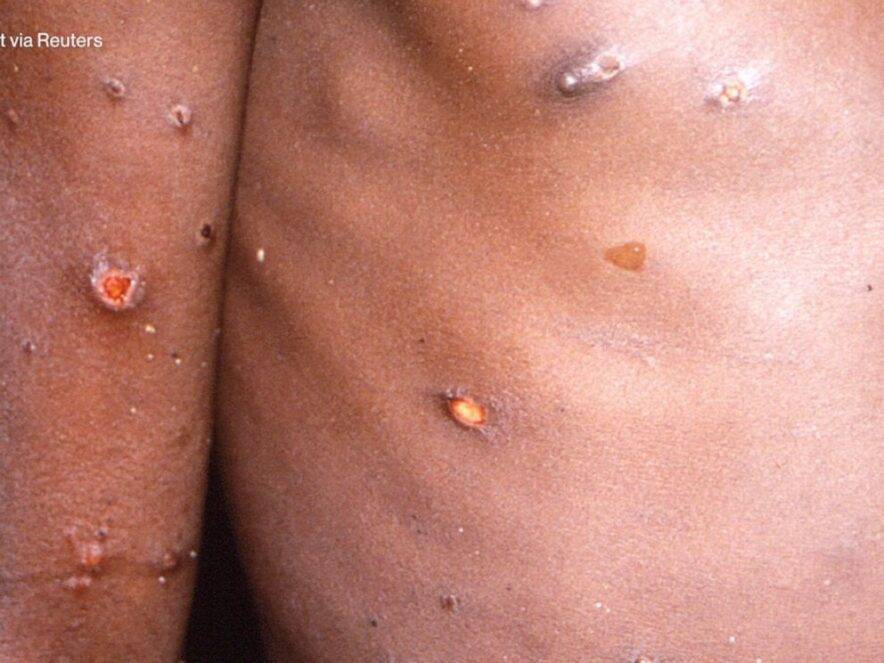
 Health2 years ago
Health2 years agoHow Long Does Monkey Pox Last Before It Surfaces in the Body?
-

 Health3 years ago
Health3 years agoWhat Causes Swollen Body? Understanding Edema and its Triggers
-
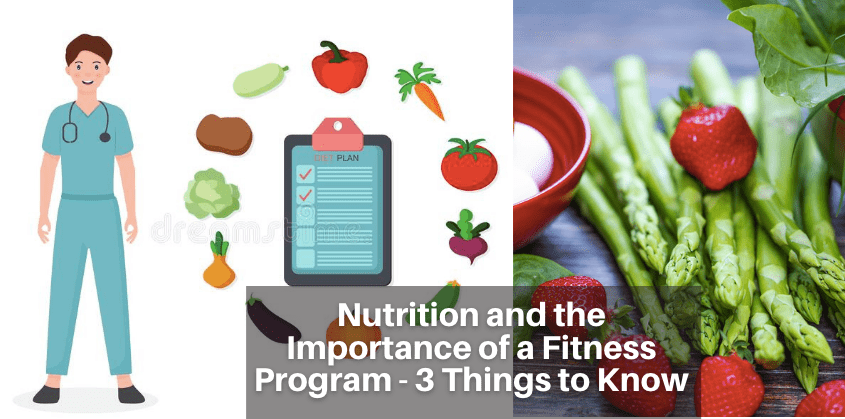
 Health3 years ago
Health3 years agoNutrition and the Importance of a Fitness Program – 3 Things to Know
-

 Health3 years ago
Health3 years ago5 Weird Reasons Why Pimples Disappear After Marriage
-

 Health3 years ago
Health3 years agoHealth Benefits Of Pawpaw Seed? 7 Things To Know

